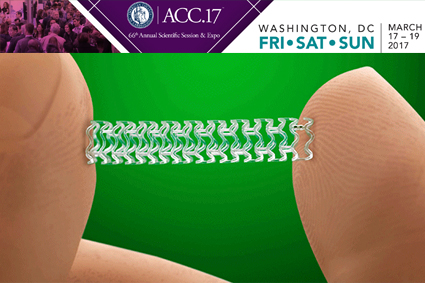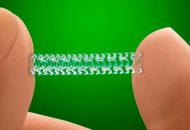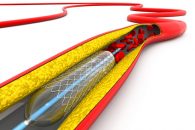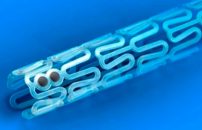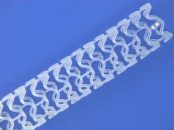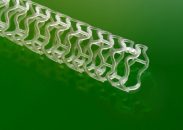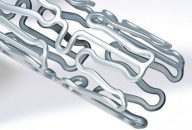The two year outcomes of ABSORB III, presented at the scientific sessions of the American College of Cardiology 2017, have shown the bioresorbable scaffold Absorb GT1 (BVS, Abbott Vascular) was associated with increased risk of target vessel failure, compared against the everolimus eluting stent Xience. At 25 months, target vessel failure occurred in 11%…
Very Late Thrombosis: Bioresorbable Scaffolds vs. Everolimus-Eluting Metallic Drug-Eluting Stents
This study sought to compare the 2-year outcomes between bioresorbable vascular scaffolds (BVS) and everolimus-eluting metallic drug-eluting stents (EES), since the occurrence of very late thrombosis (thrombosis beyond 1 year after implantation) is an increasing concern in relation to new devices. This meta-analysis was conducted based on 24 studies (BVS: n = 2567 and EES: n = 19,806) reporting the…
Chronic Total Occlusion: Bioresorbable Scaffolds or Drug Eluting Stents?
There is little evidence to support the safety and efficacy of bioresorbable scaffolds (BRS) for the treatment of chronic total occlusions (CTO). This multicenter registry included consecutive patients with CTO receiving BRS (Absorb; Abbott Vascular) vs. 2nd generation drug eluting stents (DES). Primary end point was target vessel failure at long term (composite…
BVS: Safe and Effective in the Infrapatellar Area
Courtesy of Dr. Carlos Fava. Drug-eluting stents (DES) have shown mid-term benefit in lesions below the knee (BTK) by reducing the rate of acute occlusion and restenosis in type A and B lesions. However, failure to recover the self-regulatory functions of the local vessel could hinder future revascularization. Drug-eluting bioresorbable scaffolds (BVS) could be a solution to this problem.…
ABSORV at Long Term in Daily Practice Lesions
This work reports one year outcomes of the BVS Expand registry. Multiple studies have shown the safety and feasibility of the everolimus eluting bioresorbable scaffold ABSORB (Abbott Vascular, Santa Clara, California), but medium and long term data are limited and only on simple lesions. This is a prospective single-center registry assessing ABSORB performance in…
BVS: Comparable to Second-Generation DES in Complex Lesions
A center carrying out a mid- to long-term follow-up of the performance of everolimus-eluting bioresorbable scaffolds (Absorb) observed that this new device has an acceptable rate of major cardiovascular events, when compared to second-generation drug-eluting stents. Furthermore, although the population was complex and non-selected, no cases of early thrombosis were reported. This study enrolled 249 patients…
Good outcomes of bioresorbable scaffolds in off-label cases
Original Title: Clinical outcomes following “off-label” versus “established” indication of bioresorbable scaffolds for treatment of coronary artery disease in a real-world population. Reference: Tadashi Miyazaki, et al EuroIntervention 2016;11:475-478. Courtesy of Dr. Carlos Fava. Bioresorbable scaffolds (BSB) have shown their benefit in different studies, but there is little information available on “off label”…
Safety of High Pressure Post-dilation in Bioresorbable Scaffolds
Original Title: Is High Pressure Postdilation Safe in Bioresorbable Vascular Scaffolds? Optical Coherence Tomography Observations After Noncompliant Balloons Inflated at More than 24 Atmospheres. Reference: Enrico Fabris et al. Catheter Cardiovasc Interv. 2016 Apr;87(5):839-46. Courtesy of Dr. José Amadeo Guillermo Álvarez. The mechanical properties of bioresorbable vascular scaffolds (BVS) are different from those of bare…
ABSORB III: Everolimus Eluting Bioresorbable Scaffolds for Coronary Artery Disease
Original Title: Everolimus-Eluting Bioresorbable Scaffolds for Coronary Artery Disease. Reference: Stone, M.D. for the ABSORB III Investigators. N Engl J Med 2015;373:1905-1915. The ABSORB III is part of a series of randomized studies that test bioresorbable scaffolds in the clinical practice (ABSORB II, EVERBIO II, ABSORB Japan, and ABSORB IV). 2008 patients were randomized; 60% had…
- 1
- 2
